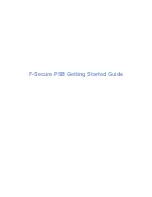
Retune Speed
Auto-Tune 5 also gives you control over how
rapidly, in time, the pitch adjustment is made
toward the scale tone. This is set with the
Retune Speed control (see Chapter 3 for more
details).
• Fast Speed settings are appropriate for
short duration notes and for mechanical
instruments, like oboe or clarinet, whose
pitch typically changes almost instantly. A
fast enough setting will also minimize or
completely remove a vibrato, as well as
produce the infamous “Cher effect.”
• Slow Speed settings, on the other hand,
are appropriate for longer notes where you
want expressive pitch gestures (like vibrato)
to come through at the output and for vocal
and instrumental styles that are typified
by gradual slides (portamento) between
pitches. An appropriately selected slow
setting can leave expressive gestures intact
while moving the average pitch to the correct
tonal center.
Vibrato
Auto-Tune 5 allows real-time adjustment of the
depth of any natural vibrato present in the input.
Auto-Tune 5 can also add a vibrato to an input
that does not naturally exhibit one. You can
program the vibrato rate along with individual
vibrato depths for pitch, amplitude (loudness)
and formant (resonant frequencies). You can
also specify delayed vibrato with independently
programmable onset delay and onset rate.
By combining a fast Retune Speed setting with
Auto-Tune 5’s Vibrato settings, you can even
remove a performer’s own vibrato and replace
it with Auto-Tune 5’s programmed vibrato, all in
real time. Also, unusual combinations of Vibrato
Waveform, Rate and Depth settings can be
used for some interesting special effects.
An Example of Automatic Mode Correction
As an example, consider this before-and-
after graphic representation of the pitch of a
vocal phrase that contains both vibrato and
expressive gestures.
In the original performance, we can see that
although the final note should be centered
around D, the vocalist allowed the tail of the
note to fall nearly three semitones flat. The
“after” plot is the result of passing this phrase
through Auto-Tune 5’s Automatic Mode
programmed to a D Major Scale (with C#
and B set to ”Remove”) and a Retune Speed
setting of 25. That Retune Speed causes
the pitch center to be moved to D, while still
retaining the vibrato and expressive gestures.
(Setting C# and B to ”Remove” is necessary
to keep Auto-Tune 5 from trying to correct
the seriously flat tail of the last note to those
pitches. See Chapter 3 for more details.)
10.0
10.5
11.0
D3
B2
ORIGINAL
PERFORMANCE
CORRECTED BY
AUTO-TUNE 5
C#3
Содержание Auto-Tune 5
Страница 1: ...Owner s Manual Auto Tune5 PitchCorrectingPlug in...
Страница 6: ...vi Chapter 5 New Features Quick Start Guide 51 Chapter 6 Creative Applications 57...
Страница 8: ......
Страница 20: ...14...
Страница 46: ...40...
Страница 64: ...58...
















































